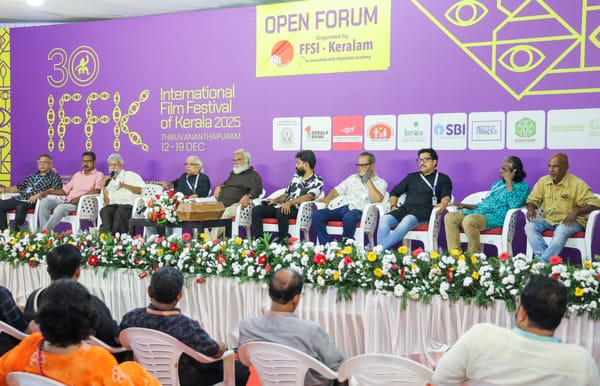Review of Chowk’s production ‘Pallavi & Space’
The National Museum of Singapore was the perfect setting for Chowk’s latest production, Pallavi & Space. Raka Maitra, the Artistic Director of Chowk and the choreographer of the performance, was victorious in her mission to explore the space of the venue through the dichotomy between the old and the

The National Museum of Singapore was the perfect setting for Chowk’s latest production, Pallavi & Space. Raka Maitra, the Artistic Director of Chowk and the choreographer of the performance, was victorious in her mission to explore the space of the venue through the dichotomy between the old and the new, the classical and the contemporary, the then and now. The performance mimicked the traditional structure of the Pallavi, with playful bursts of slow, restricted movements and faster, more spread out choreography. The dance started with a relaxed tempo and eventually picked up a more rapid beat. These waves of differing tempos continued through the evening, making the dance engaging and intriguing. The playful camaraderie between the dancers and the musicians was unmistakable, and it almost seemed as though the two—the music and the choreography—would not exist without the other. Sometimes teasing, sometimes picking up where the dancers left off, and sometimes enhancing each other, Saranjith NK’s hearty percussion and Uma Katju’s soulful voice were the perfect accompaniment to Maitra’s choreography, and vice versa. The soft tinkles of the dancers’ ghungroos against the dramatic roars of the Mizhavu—a percussion instrument from Kerala replacing the traditional Mardala—and Katju’s harmonious aalaap were especially enchanting.

The highlight, however, were the way in which the dancers explored the space of the theatre with their unexpected, asymmetric formations. While the costumes and the movements stayed true to its’ Odissi traditions, Maitra’s fearless choreography shone through when the dancers would drift away, seemingly doing their own thing, and eventually gather back into a perfectly imperfect pattern. Often, the dancers were wonderfully asynchronous, following different tempos and movements to the same music. Reminiscent of a jam session, this allowed each brilliant dancer— Karishma Nair, Meera Gurumurthy, Namaha Mazoomdar, Sandhya Suresh and Raka Maitra—to stand out as an individual in a group performance. Maitra managed to enhance the beauty of the traditional Pallavi by looking at it through a contemporary filter, all the while respecting the integrity of the classical form. The playfulness between the dichotomies was what made the performance truly enjoyable—the slow and swift tempos; the traditional movements with the unconventional patterns; the dancers and the musicians. Pallavi & Space was a celebration of dance in its most joyful form.




